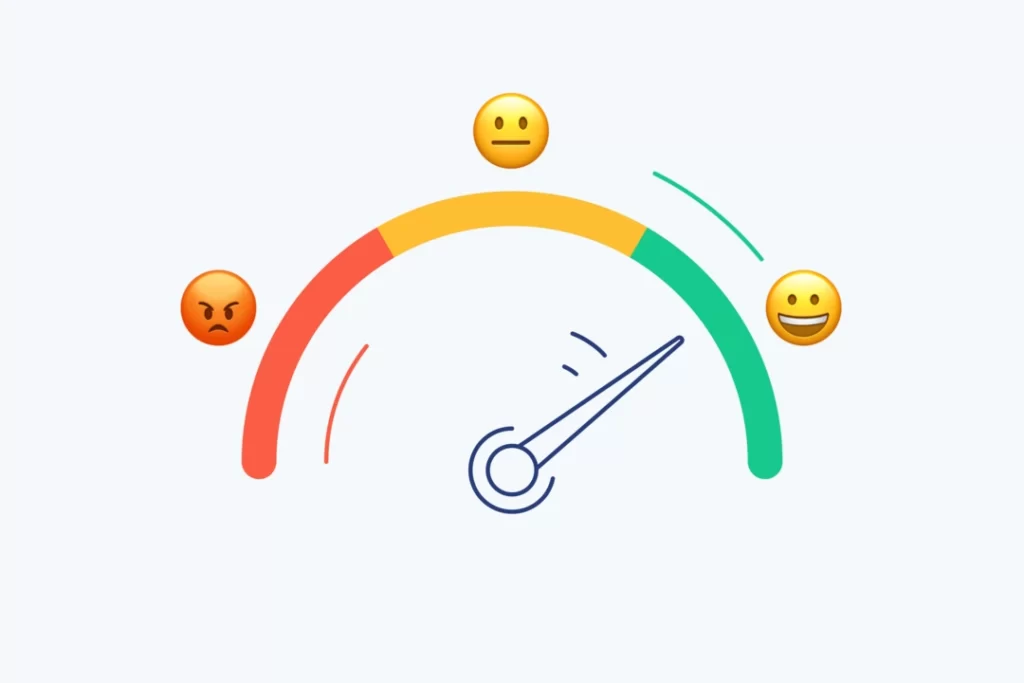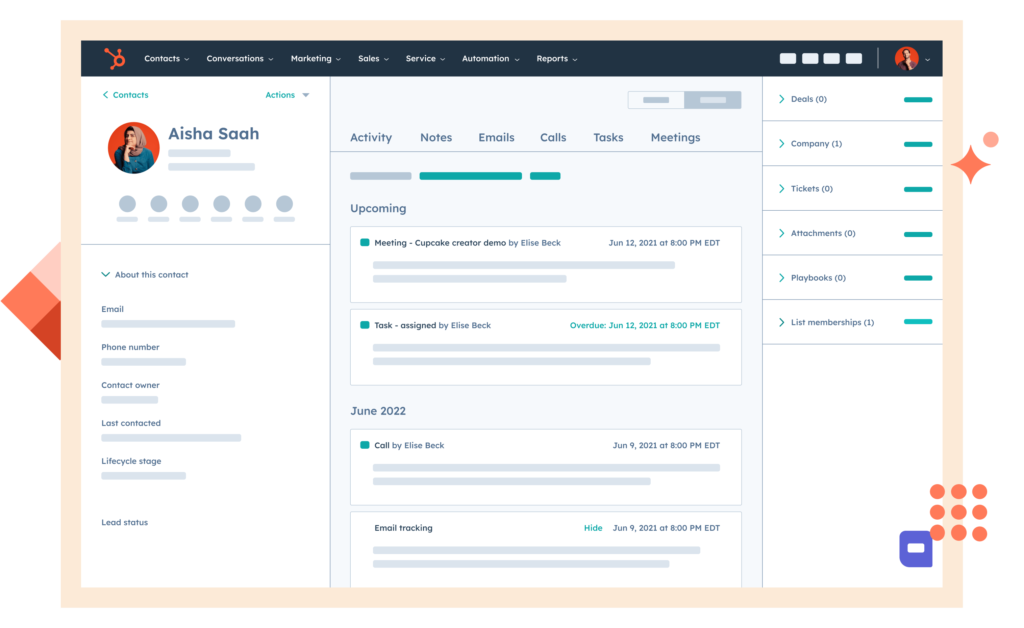Customer Experience Management: Unbreakable Brand Loyalty
Let’s start with the basics, okay? Customer experience management (CEM or CXM) is about keeping track of everything between a company and its clients. It may also involve using appropriate technologies to oversee and organise these interactions. From the first point of contact to nurturing loyalty in the long term, this should be done to make all touchpoints seamless and positive.
But why is it so important? Well, consider the last few businesses you recommended to your friends. I bet “great customer service” was among the top reasons for each. Nowadays, mediocre brands are differentiated from beloved ones whose customers can’t get enough of them because of their ability to provide an incredible customer experience.
Table of Contents
The Rising Significance of CXM
Listen up – things move fast in our interconnected world. Due to digitalisation, clients have higher expectations now than ever before. Believe me when I say this: if there are thousands upon thousands (if not millions) more places where people can take their money within seconds after searching online, they will be pretty particular about who deserves it!
At the same time, though, thanks again chiefly due to social media coupled with review websites, etc., news travels faster than light about any given moment’s negative experiences with various companies’ representatives across different industries – imagine how much worse things were before. You remember hearing stories like those, don’t you… “I called them five times & got hung up on twice”, or “they said they’d call back but never did”? One wrong move could ruin an organisation because everyone knows what happened yesterday morning.
Thus, it is no surprise that leading firms regard such client touchpoints seriously. Indeed, some experts even predict that by 2030, over twenty-five billion dollars worldwide will be spent solely on improving one’s consumer experience strategy!
Benefits of Excellent Customer Experience

There are countless plusses to levelling up your CXM game — from hard figures to soft skills. Here are a few pay-offs:
- Boosted Revenue & Profits: You’d be surprised how much customers spend when they feel appreciated and everything goes smoothly. Businesses that have excellent customer service consistently report higher profits and revenues. Ring, ring!
- Higher Customer Retention & Loyalty: Getting a new client on board costs five times more than retaining an existing one. So, if you roll out the red carpet for your current supporters, you’re securing long-term loyalty that will keep money flowing through those channels.
- More substantial Brand Reputation: Have you ever seen those reviews where someone says, “I can’t even…”? Yeah, well, imagine getting hundreds of those because people can’t even believe how excellent every interaction with your brand is! That’s advertising gold right there.
- Competitive Advantage: The customer experience in today’s markets has become such a massive differentiator between companies; therefore, businesses should try their best in this area to attract more customers who will not want anything less than the best from them compared to their competitors.
- Deeper Customer Insights: With CXM analytics, you get to know what your audience wants…what they wish! And this knowledge will help inform better products down the line…
- Lower Operating Costs: Well-run customer experience management leads to fewer complaints about defective products being returned, thus saving organisations huge sums which could have been used on firefighting due to rampant complaints or many product return requests, making them operate efficiently and increasing profitability.
Tips to Elevate Your Customer's Experience
Intrigued yet? Grand! Let's dive into some hands-on tips for upping those CX stakes:
Build an End-to-End Unified Experience
Map out every possible touchpoint a customer could have with your brand, from website to purchase to support requests. Look for any cracks or inconsistencies between channels and plug those holes. Customers hate having to repeat themselves or encountering abrupt transitions. Aim for a unified, cohesive journey no matter where they interact with you.
Get Personal
In a sea of mass-market impersonality, personalisation is the new luxury experience. Use data and AI to tailor product recommendations, content, and messaging as much as possible. Simple gestures like using a customer's name can add delightful personal flair.
Listen and Respond
Gathering feedback is wise, but responding promptly and meaningfully is better. Make it clear that you hear customers' voices and act decisively on their input to improve experiences. Dialogue, not unilateral monologue, is what breeds loyalty these days.
Employee Engagement
I hope this goes without saying, but your frontline employees shape the customer journey immensely. Thus, it is critical to invest in their proper training, empowerment, and motivation. Happy, knowledgeable staff pass those positive vibes onto customers.
Technology Enablement
Tools like CRM systems, journey mapping software, chatbots, and data analytics are today's engines for optimised customer experiences. Just be sure to select and integrate solutions thoughtfully to enhance experiences rather than complicate them.
Be Proactive
Refrain from settling for just reacting to customers' needs and issues. Anticipate their likely wants and head off potential problems before they occur. A little proactive thoughtfulness always impresses and delights.
Focus on Moments That Matter
Not all interactions are created equal. Home in on the pivotal make-or-break moments in your typical customer journey and ensure you nail those flawlessly at all costs. Our memories crystallise most around those defining experiences.
Customer Experience Management Best Practices

Enough with the broad strokes – let's get specific! Follow this trusty blueprint to elevate your CXM to the next level:
Map the Customer Journey
First, you can improve the journey once you've charted its twists and turns. Use data and research to meticulously map your customers' step-by-step process when interacting with your business across all channels and touchpoints.
Get a 360-degree Customer View.
Collate every shred of data from past interactions, purchases, demographics, and more to form an intimate profile of each customer. This “360-degree view” illuminates precisely who they are and what motivates their behaviour to personalise experiences better.
Prioritise Customer Needs
It's not about you, to be blunt. Put those hard-earned customer insights into designing and optimising every process, product and experience around their explicit wants and needs first – not just your internal efficiencies.
Create Orchestration
Think of CXM as conducting an orchestra with many players and moving parts that all need to harmonise. Use a centralised system and integrated processes to choreograph seamless omnichannel experiences no matter where a customer appears.
Monitor Performance
Constantly measure and analyse the metrics that matter most in assessing the quality and impact of customer experiences across all interaction channels. Net Promoter Score, Customer Satisfaction (CSAT), Customer Effort Score (CES) and churn rates are some biggies.
Close the Feedback Loop
Don't just gather VoC (voice of the customer) data – put those insights into action by rapidly testing, learning, and iterating to enhance experiences in ways customers are directly asking for. More minor fixes can add up to a vastly improved overall experience.
Employee Empowerment
Speaking of iteration, innovative companies recognise that frontline employees will inevitably encounter situations not covered in any manual. Ensure they have the training and authority to improvise unique solutions to delight customers.
Powerful CEM Technologies

Okay, admit it: your eyes lit up at the promise of fancy tech solutions, am I right? While indeed not silver bullets on their own, some vital enabling technologies can take your CXM efforts to awesome new altitudes:
CRM Systems
For customer relationship management, CRMs serve as the “central brain” for storing, managing, and leveraging all your customer data to deliver white-glove personalised service across devices and channels. Salesforce, Microsoft Dynamics, Oracle, and HubSpot are some leading options.
Customer Analytics
This broad set of tools helps crunch structured and unstructured data sets to uncover priceless insights about your customers' demographics, behaviours, preferences, and sentiments. Then, you apply that intel to improve experiences and offerings vastly. Qualtrics, Medallia, and Clarabridge are significant players.
Journey Mapping
Visual software that diagrams the entire cycle of customer interactions to find weaknesses, redundancies, and disconnects. Tools like UXPressia and UXCam allow you to record user sessions and overlay analytics so you can tweak experiences for maximum impact.
Personalisation Engines
We live in an era where customers expect every experience to be tailored just for them. AI-powered personalisation engines from companies like Dynamic Yield use machine learning to cater content and recommendations automatically in real-time as visitors browse.
Omnichannel Orchestration
These comprehensive platforms like Genesys and eGain tie together all your communication channels (voice, chat, email, SMS, social, etc…) into one unified view so no context is lost as customers switch between them. A seamless, purposefully designed journey no matter how they engage.
Voice of the Customer (VoC)
Voice of the Customer platforms like Confirmit, Qualtrics, and Medallia collate feedback from many data streams – surveys, social media, support calls, and IoT device data. This holistic view exposes the unvarnished truth about what customers desire.
Customer Experience Management Metrics That Matter
Of course, all the strategy and tech investments pay off is nought without diligent measurement, analysis, and optimisation. Keep a close watch on these most critical CX metrics:
Customer Satisfaction (CSAT)
By far the most ubiquitous CX stat, CSAT scores measure overall contentment with a product or service through direct surveys or ratings. But it only offers a surface-level snapshot of experiences.
Net Promoter Score (NPS)
The gold standard for assessing customer loyalty, NPS, is based on that ultimate question: “How likely are you to recommend our company to others?” Promoters boost your brand, detractors damage it, and the delta between them indicates experience strengths or weaknesses.
Customer Effort Score (CES)
This increasingly monitored measure gauges the ease and efficiency of an interaction from the customer's perspective. Excessive friction or struggles lower the CES score, indicating areas to streamline and simplify the process.
Customer Churn Rate
Sometimes called the “defection rate,” this harsh percentage tracks how many customers ditch your products or services over a set timeframe. High churn often signals systemic breakdowns or lapses in the overall customer experience.
Customer Lifetime Value (CLV)
This powerful metric projects the total revenue you can expect from any given customer based on their buying patterns, retention, and projected engagement cycle. Optimising CLV is the holy grail of CXM.
Making CXM an Organisational Discipline

I hope I've sold you on the immense importance of customer experience management. But how does a company genuinely institutionalise it as an ongoing, cross-functional discipline rather than a short-lived initiative? Here are some parting tips:
Secure Buy-In Across the Board
CXM can't just be another buzzword or silo within marketing or customer service. It has to become a formalised, sustained commitment embedded into your organisation's processes and DNA at every level. Getting wholehearted buy-in from executives and stakeholders across all departments is job one.
Centralise Governance
A unified, seamless customer experience requires centralised governance to ensure consistency and accountability. Form a dedicated CXM team or council with authority across every customer-facing function.
Invest in the Right Tech Stack
Robust, integrated, AI-driven solutions can supercharge your ability to gather and activate customer insights in real time across every touchpoint. But the tech itself is insufficient without…
Training & Change Management
Employees are the linchpin of any CXM initiative's success. Invest not just in their direct training on new systems but also instil the holistic mindset and organisational change required to keep them focused on the customer.
Frequently Asked Questions about Customer Experience Management
What's the difference between CXM and CRM?
Customer relationship management (CRM) is a technology platform that optimises sales processes and facilitates customer account management. Customer experience management (CXM) refers to the overarching organisational strategy, processes, metrics and technology solutions for delivering exemplary end-to-end experiences continually.
What are the most critical customer experience management skills?
CXM leaders should cultivate empathy, emotional intelligence, creativity, communication skills, and collaboration abilities. Data analysis, technology management, project management and process mapping skills are also crucial.
How do I choose the right CXM technology?
Define your specific requirements first by mapping all customer touchpoints and experiences you need to enable. Evaluate solutions for integration capabilities, scalability, support for emerging channels, ease of use, and robust data/analytics horsepower.
What are some best practices for customer experience?
Understand your core customer profiles inside out. Map and optimise every touchpoint they'll encounter. Set up centralised systems for unified customer data and interactions. Measure constantly and improve based on feedback. Empower employees to make situational decisions to delight customers.
What qualifies as a great customer experience?
Most experts agree that great CX consistently meets or exceeds customer expectations, reduces friction/effort, treats them as individuals, integrates seamlessly across channels, resolves problems proactively, and fosters loyalty.
How does customer experience impact business results?
Businesses with superior customer experiences achieve measurable benefits like higher customer satisfaction, retention and lifetime value, increased revenue and profits, lower service costs, more robust brand differentiation, and competitive advantages.
What's trending in CXM strategies and technologies?
Some significant trends include AI and predictive analytics for deeper personalisation, integrating IoT/smart devices into CX orchestration, voice interfaces, augmented reality assistance, and greater adoption of cloud-based and modular “best-of-breed” solutions.
Customer Experience is THE Competitive Battleground
In today's hyper-connected, crowded market landscape, optimising the customer experience from start to finish is the prime competitive differentiator. Some have even gone so far as to declare it's the only actual brand differentiator left.
While products, pricing, and performance used to be the critical competitive arenas, today's customers see those as table stakes check-boxes across any business worth their time. What keeps them fiercely loyal (or swiftly headed for the exit) is the personal experience your brand guides them through every interaction.
The companies delivering superior, distinctively delightful customer experiences today are reaping huge rewards. They attract and retain customers more efficiently. Cultivate raving brand evangelists. Earn premium pricing power. Spend less on marketing to constantly replenish churned customers. Gain entry barriers against hungry upstarts.
In short, only the brands that live and breathe customer experience management at the deepest organisational level will thrive in the years ahead. This should no longer be a nice-to-have sideshow but the central strategic mission embedded into your company's DNA.
So, whether you're just getting started or looking to level up your existing CXM practice, see this as an ongoing journey of continuous improvement. Optimise, refine, break down archaic organisational silos, rinse and repeat. Delivering consistently unique end-to-end experiences for your customers needs to become more than just a passing priority – it is fast becoming an existential imperative in our modern age. Rise to that challenge, and you'll reap the rewards of unbreakable customer loyalty and all the riches it unlocks.
